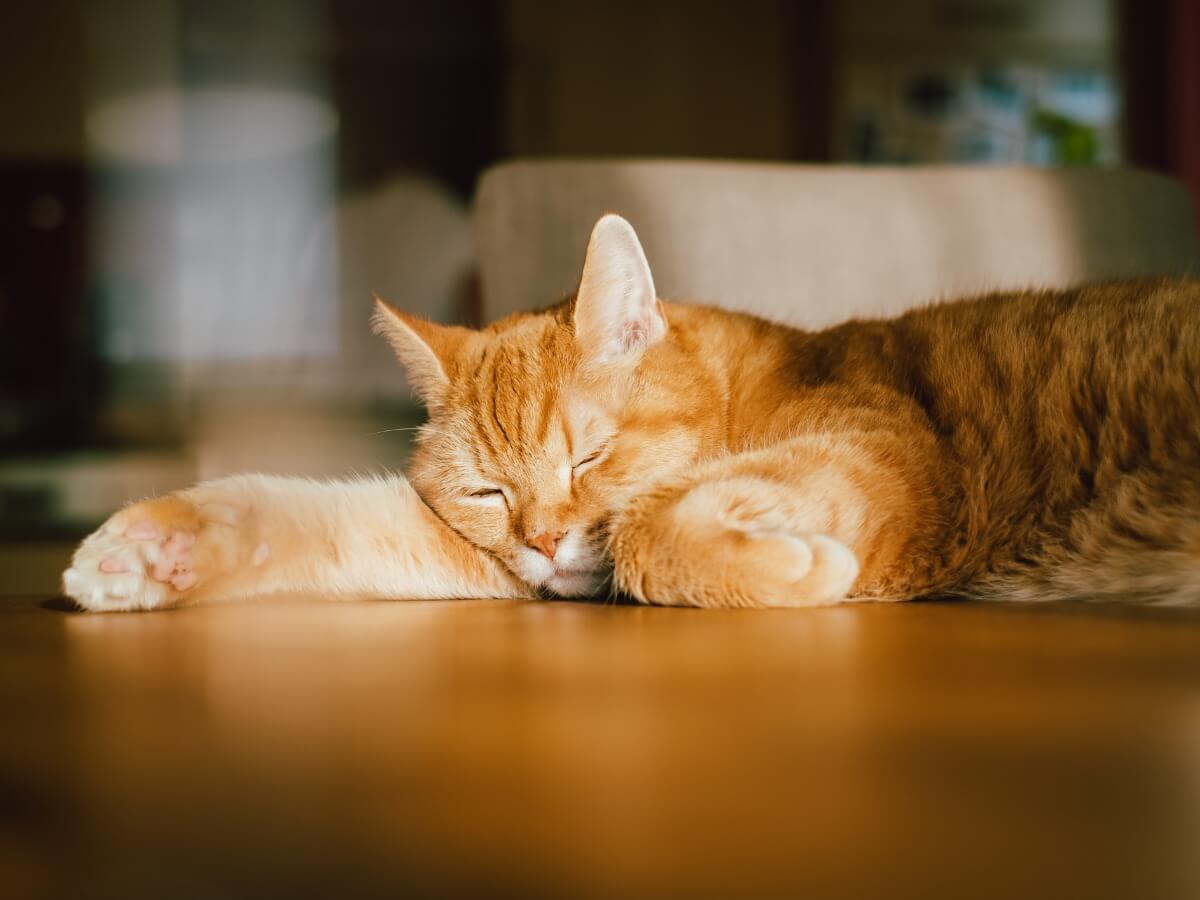Valerian for Cats: Effects and Dosage


Reviewed and approved by the biologist Samuel Sanchez
More and more people decide to turn to natural medicine to improve the health of their pets. However, many of them fall into the error of believing that, since they’re natural plants, they’re all good for animals, and yet sometimes they aren’t. On this occasion, you’ll learn all about valerian for cats, and its effects.
Before starting, remember that it’s essential to have the opinion of a professional on the subject when seeking the well-being of your pet. Always go to a veterinarian before carrying out any new practice with your feline friend. Get informed and ensure that what you’re doing is going to contribute to your cat’s quality of life, and not harm it in any way.
What is valerian?
Valerian, whose scientific name is Valeriana officinalis, is a plant native to Europe and Western Asia. This herbaceous plant belongs to the ancient Valerianaceae family and grows in low, sandy meadows, humid and shady places, forests, near water courses, and in mountainous areas.
In addition, it’s a perennial plant that was approved by the European Medicines Agency to be used in traditional medicine. Due to this, it’s currently used as an adjunct in the treatment of certain medical conditions, especially in cases of anxiety and sleep disorders. Although it’s never a substitute for a prescription drug, positive uses have been reported.
In general, valerian is used in cases of anxiety, excitability, and insomnia, but it has also been used to combat headaches, intestinal colic, rheumatic pain, dysmenorrhea, and small inflammations. Traditional Chinese medicine even uses it to treat colds, bruises and menstruation problems.
This herbaceous plant with small pale pink flowers was known and used since ancient times by Greek and Roman doctors, who prescribed it as a diuretic, analgesic and as a drug against coughs.

Is valerian toxic to cats?
Now, although it’s clear that valerian has been used to impact people’s health, what about valerian for cats? Well, this herbaceous plant isn’t part of the list of toxic plants for felines, so it can be used in these pets without a problem. However, it’s important to make it clear that valerian shouldn’t be used in large quantities when it comes to cats.
Too much of this medicinal plant could harm your pet, causing vomiting, stomach upset and liver problems. So, even though valerian isn’t toxic to cats, you must be cautious with the dose that you give your pet.
Effects of valerian in cats
Although valerian works to calm people’s nerves, in cats its effect is totally different. This plant contains volatile essential oils that stimulate the feline’s nervous system, producing a reaction similar to that generated by the hormones released by cats in heat. That is, the felines get a feeling of pleasure, well-being, and euphoria.
In this sense, valerian alone is stimulating for cats. Due to the aforementioned effects, this plant could be considered effective in reducing stress in felines. Unfortunately, if it’s mixed with sedative drugs, its effect can be potentiated to become dangerous for the pet.
Valerian dosage for cats
Now that you’ve got to know about valerian, if you decide to use it on your cat, you’ll need to be very precise in the dose that you provide. This varies, depending on the product you purchase, as there are valerian bags for cats, valerian drops, snacks, sprays, and more. Each product has its own indications for use and dosage.
Also, keep in mind that it isn’t recommended to give your cat valerian for very long periods, even when it’s a treatment. This could harm your pet. Because of this, you should only give this plant to your cat in small amounts and from time to time.
How to administer valerian?
As mentioned above, it’s better to go to a veterinarian to avoid mistakes when giving valerian to your cat. This professional will tell you which pharmaceutical products contain valerian and the ones that are safer for your pet.
Ideally, buy a compound for veterinary use. Also, if you have a nervous cat, it will be appropriate to get a product that, apart from valerian, contains a sedative plant. If the goal is to stimulate, you can give the feline only valerian.
It should be noted that the effects of valerian are due to its smell and not due to its intake. However, neither is it toxic if your cat wants to lick it. With this understood, the most common way to stimulate a feline through valerian is to put bags of this herb throughout the house. The sprays can be used by sprinkling them on the animal’s bed or the place where you want it to play.
Valerian for cats in short treatments
The ideal thing with valerian for cats is to use it in the shortest possible treatments. Although you already know that this plant isn’t toxic for your pet, you shouldn’t use it in excess. Giving this plant to the feline for long periods of time can be addictive and harmful.
Tips on valerian for cats
As a recommendation, it’s best to be close to your feline when you let them play with an object containing valerian. In this way, you can intervene if your pet breaks the seams. After several minutes of fun, remove the toy from the cat and put it away to maintain the stimulation.
Given its stimulating effect, it isn’t a good idea to give your pet valerian if you’re planning a trip with them. On the other hand, although it isn’t common, if your cat reacts aggressively to valerian, remove it completely from its life.

Finally, remember that the best thing when giving valerian to your cat is to have the approval and follow-up of a veterinarian. Only a professional in the field can determine what’s best for your pet and how it could improve its quality of life.
More and more people decide to turn to natural medicine to improve the health of their pets. However, many of them fall into the error of believing that, since they’re natural plants, they’re all good for animals, and yet sometimes they aren’t. On this occasion, you’ll learn all about valerian for cats, and its effects.
Before starting, remember that it’s essential to have the opinion of a professional on the subject when seeking the well-being of your pet. Always go to a veterinarian before carrying out any new practice with your feline friend. Get informed and ensure that what you’re doing is going to contribute to your cat’s quality of life, and not harm it in any way.
What is valerian?
Valerian, whose scientific name is Valeriana officinalis, is a plant native to Europe and Western Asia. This herbaceous plant belongs to the ancient Valerianaceae family and grows in low, sandy meadows, humid and shady places, forests, near water courses, and in mountainous areas.
In addition, it’s a perennial plant that was approved by the European Medicines Agency to be used in traditional medicine. Due to this, it’s currently used as an adjunct in the treatment of certain medical conditions, especially in cases of anxiety and sleep disorders. Although it’s never a substitute for a prescription drug, positive uses have been reported.
In general, valerian is used in cases of anxiety, excitability, and insomnia, but it has also been used to combat headaches, intestinal colic, rheumatic pain, dysmenorrhea, and small inflammations. Traditional Chinese medicine even uses it to treat colds, bruises and menstruation problems.
This herbaceous plant with small pale pink flowers was known and used since ancient times by Greek and Roman doctors, who prescribed it as a diuretic, analgesic and as a drug against coughs.

Is valerian toxic to cats?
Now, although it’s clear that valerian has been used to impact people’s health, what about valerian for cats? Well, this herbaceous plant isn’t part of the list of toxic plants for felines, so it can be used in these pets without a problem. However, it’s important to make it clear that valerian shouldn’t be used in large quantities when it comes to cats.
Too much of this medicinal plant could harm your pet, causing vomiting, stomach upset and liver problems. So, even though valerian isn’t toxic to cats, you must be cautious with the dose that you give your pet.
Effects of valerian in cats
Although valerian works to calm people’s nerves, in cats its effect is totally different. This plant contains volatile essential oils that stimulate the feline’s nervous system, producing a reaction similar to that generated by the hormones released by cats in heat. That is, the felines get a feeling of pleasure, well-being, and euphoria.
In this sense, valerian alone is stimulating for cats. Due to the aforementioned effects, this plant could be considered effective in reducing stress in felines. Unfortunately, if it’s mixed with sedative drugs, its effect can be potentiated to become dangerous for the pet.
Valerian dosage for cats
Now that you’ve got to know about valerian, if you decide to use it on your cat, you’ll need to be very precise in the dose that you provide. This varies, depending on the product you purchase, as there are valerian bags for cats, valerian drops, snacks, sprays, and more. Each product has its own indications for use and dosage.
Also, keep in mind that it isn’t recommended to give your cat valerian for very long periods, even when it’s a treatment. This could harm your pet. Because of this, you should only give this plant to your cat in small amounts and from time to time.
How to administer valerian?
As mentioned above, it’s better to go to a veterinarian to avoid mistakes when giving valerian to your cat. This professional will tell you which pharmaceutical products contain valerian and the ones that are safer for your pet.
Ideally, buy a compound for veterinary use. Also, if you have a nervous cat, it will be appropriate to get a product that, apart from valerian, contains a sedative plant. If the goal is to stimulate, you can give the feline only valerian.
It should be noted that the effects of valerian are due to its smell and not due to its intake. However, neither is it toxic if your cat wants to lick it. With this understood, the most common way to stimulate a feline through valerian is to put bags of this herb throughout the house. The sprays can be used by sprinkling them on the animal’s bed or the place where you want it to play.
Valerian for cats in short treatments
The ideal thing with valerian for cats is to use it in the shortest possible treatments. Although you already know that this plant isn’t toxic for your pet, you shouldn’t use it in excess. Giving this plant to the feline for long periods of time can be addictive and harmful.
Tips on valerian for cats
As a recommendation, it’s best to be close to your feline when you let them play with an object containing valerian. In this way, you can intervene if your pet breaks the seams. After several minutes of fun, remove the toy from the cat and put it away to maintain the stimulation.
Given its stimulating effect, it isn’t a good idea to give your pet valerian if you’re planning a trip with them. On the other hand, although it isn’t common, if your cat reacts aggressively to valerian, remove it completely from its life.

Finally, remember that the best thing when giving valerian to your cat is to have the approval and follow-up of a veterinarian. Only a professional in the field can determine what’s best for your pet and how it could improve its quality of life.
All cited sources were thoroughly reviewed by our team to ensure their quality, reliability, currency, and validity. The bibliography of this article was considered reliable and of academic or scientific accuracy.
- Valeriana. Ministerio de Salud de Chile. Recogido el 11 de agosto de 2021 de: https://www.minsal.cl/portal/url/item/7d9a8480e08c1613e04001011e01021b.pdf
-
Valeriana officinalis. Fitoquímica, farmacología y terapéutica. Elsevier. Recogido el 11 de agosto de 2021 de: https://www.elsevier.es/es-revista-farmacia-profesional-3-pdf-13019927
This text is provided for informational purposes only and does not replace consultation with a professional. If in doubt, consult your specialist.








